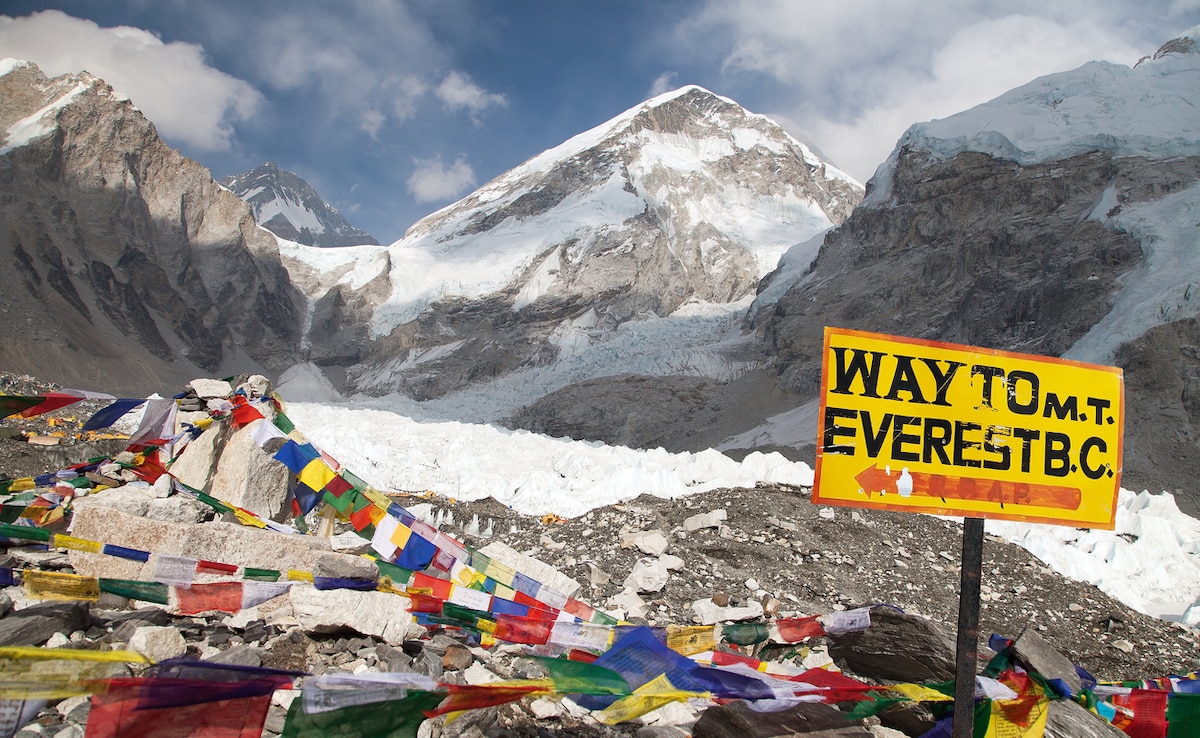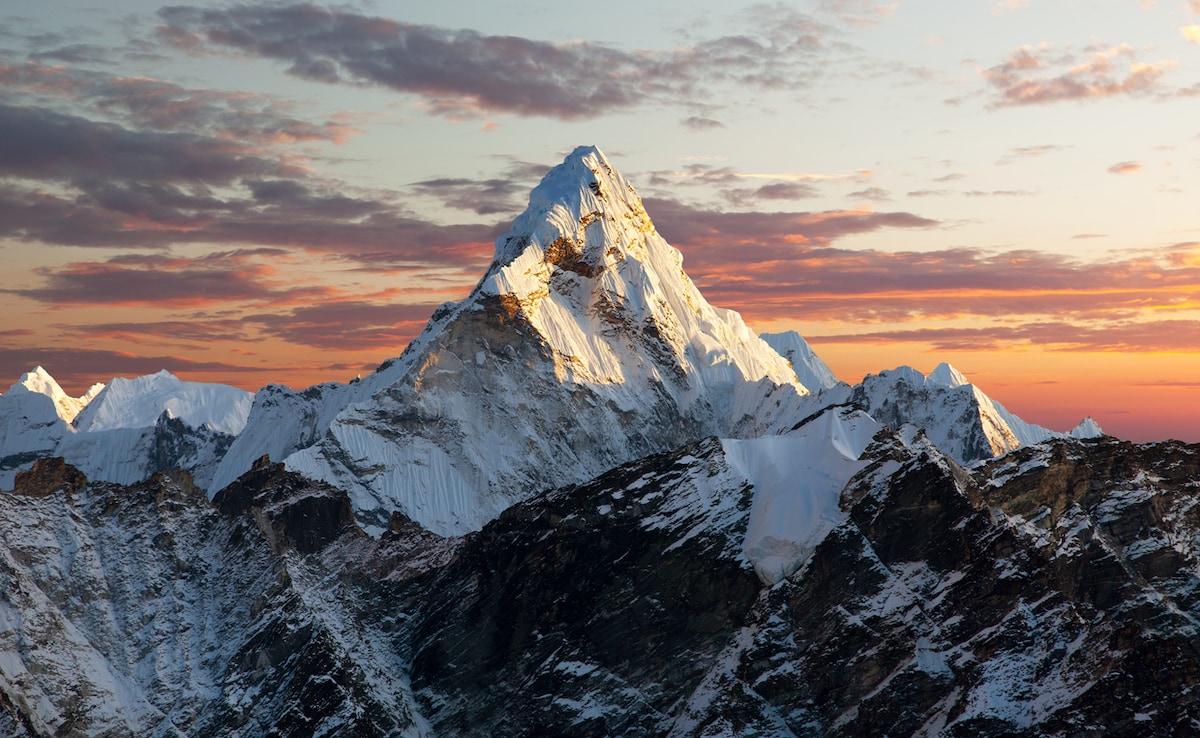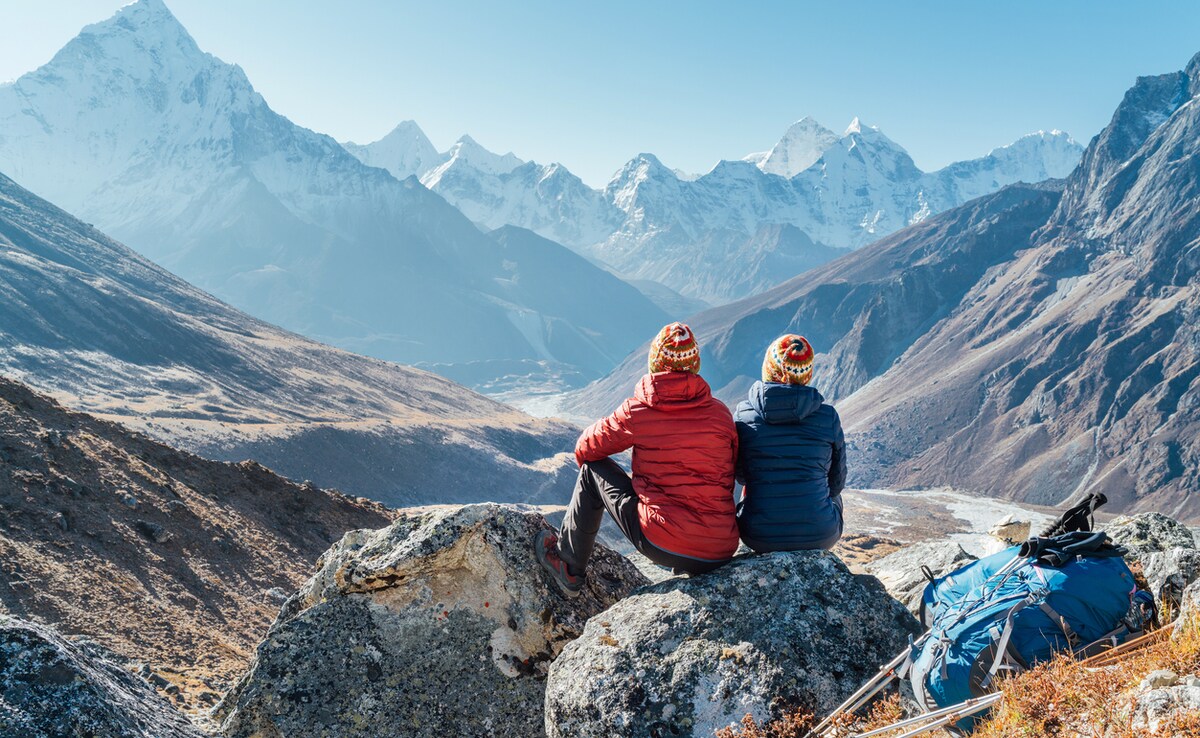
Thinking about hiking to Everest Base Camp? It's one of the most epic adventures on the planet — but it's not just about throwing on a backpack and heading up the trail. The journey demands careful preparation, from understanding how to handle high-altitude challenges to packing the right gear. Oxygen levels drop significantly as you climb, making acclimatisation essential to avoid altitude sickness. Weather conditions can also be unpredictable, with freezing nights and warm afternoons. Plus, you'll need permits, proper training, and a solid trekking plan. Whether you're going solo or with a guide, knowing what to expect can make the difference between an unforgettable experience and a tough struggle in the Himalayas.
Also Read: 11 Natural Wonders In The World That Look Almost Unreal
Here's Your Pocket Guide To The Everest Base Camp Trek:
1. The Route: How To Get There
The Everest Base Camp (EBC) trek starts in Lukla, a tiny mountain town with a notoriously hair-raising airport landing. From there, it's roughly a 130-kilometre round trip, taking about 12-14 days to complete. The trail winds through Sagarmatha National Park, passing charming Sherpa villages, Buddhist monasteries, and some of the most jaw-dropping mountain scenery on Earth. Key stops include Namche Bazaar (your acclimatisation hub), Tengboche (home to the region's most famous monastery), and Dingboche, before finally reaching Base Camp at 5,364m.

The route to the Everest Base Camp is just as memorable. Photo: iStock
2. Altitude: What To Expect At That Height
If you think this is just a long hike, think again. The high altitude is what makes EBC tough. Oxygen levels drop by 50 per cent at Base Camp compared to sea level, making every step feel like a full-on gym session. Altitude sickness is a real concern, and it can hit anyone-regardless of fitness level. Most trekkers start feeling the effects above 3,000m, with symptoms like headaches, dizziness, and nausea. The golden rule? Take it slow, stay hydrated, and never push through severe symptoms.
3. Weather: How To Brave Through Extreme Weather
Expect four seasons in a day. Mornings and nights can drop to -10 degrees Celsius or lower, while midday sun at high altitudes can have you sweating in a T-shirt. The best time to trek? March-May (pre-monsoon) and September-November (post-monsoon). Winter treks mean bitter cold and heavy snow, while summer monsoons turn the trail into a muddy slip-and-slide.

A panoramic view of the Mount Everest. Photo: iStock
4. Acclimatisation: Why You Can't Rush This Trek
Rushing to Base Camp is the fastest way to ruin your trip. Your itinerary should include at least two acclimatisation days, usually in Namche Bazaar (3,440m) and Dingboche (4,410m). These aren't just "rest days" — you'll do short hikes to higher elevations and return to help your body adjust. Ignore this process, and you could end up with altitude sickness bad enough to cut your trek short (or worse, require an emergency evacuation).
Also Read: 7 UNESCO-Listed Natural Wonders In India That'll Leave You Speechless
5. Packing: When Less Is More
You'll need warm layers, waterproof gear, and solid hiking boots — but don't overpack. Your duffel (carried by a porter) is usually limited to 10-15kg, and you'll have a small daypack for essentials. Must-haves include a down jacket, thermal base layers, a sleeping bag rated for -10 degrees Celsius, high-SPF sunscreen, and water purification tablets. Forget cotton-it soaks up sweat and takes forever to dry.

Reaching the top is so worth all the pain! Photo: iStock
6. Permits: All About The Paperwork
You can't just show up and start walking. Trekkers need a Sagarmatha National Park Entry Permit and a Khumbu Pasang Lhamu Rural Municipality Permit. If you're going with a trekking company, they'll handle this for you. Independent trekkers must get permits in Kathmandu or Monjo. Oh, and solo trekking? No longer allowed — you'll need a licensed guide.
7. Training: How To Get Your Body Ready
You don't need marathon-runner fitness, but you do need endurance. Think cardio, leg strength, and stamina. Training should include long hikes with a weighted backpack, uphill walking, and workouts focusing on legs and core strength. The goal? Be comfortable walking 5-7 hours a day on steep, uneven terrain.
Sure, the EBC trek is challenging, but the payoff — standing at the foot of the world's highest mountain — is unbeatable. Plan wisely, respect the altitude, and pace yourself. The Himalayas aren't forgiving, but if you do it right, this adventure will be one for the books.
Track Latest News Live on NDTV.com and get news updates from India and around the world

